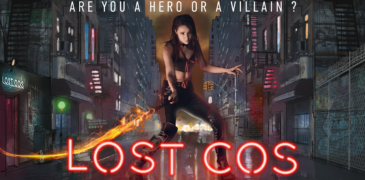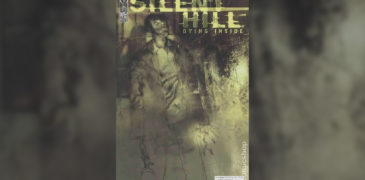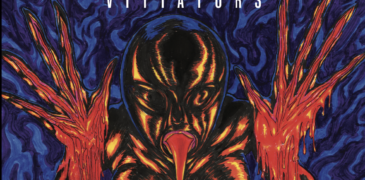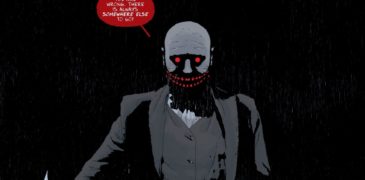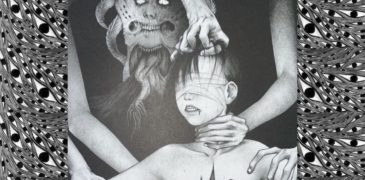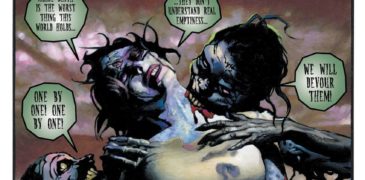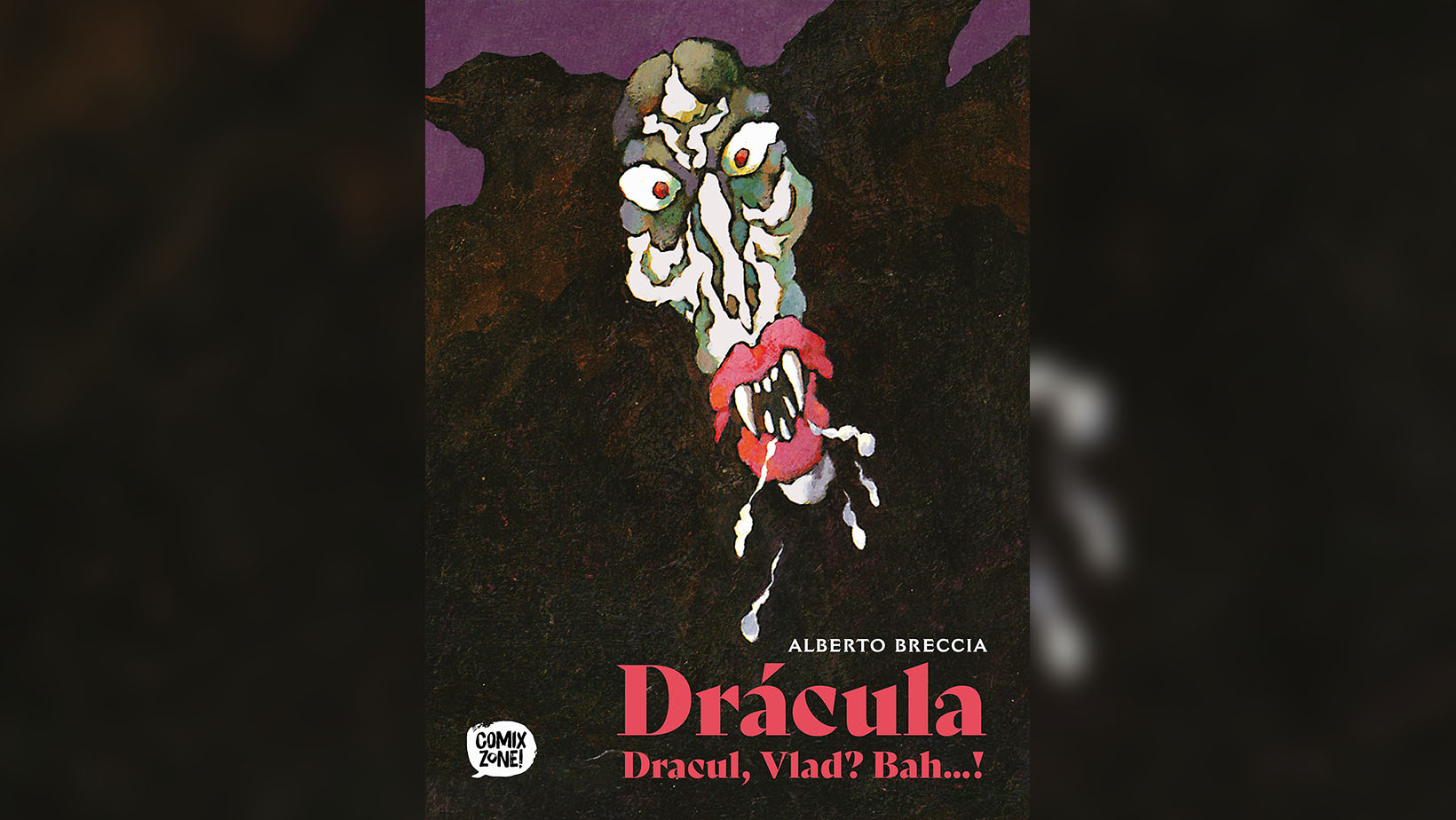
The first comic, titled The Last Night of Carnival, of this five-part series shows Dracula chasing down a smiling buxom maiden only to be confronted by… a Superman knock-off. Dracula finds himself out-matched and left literally fangless, thus beginning a series of stories exploring an aging monster in an increasingly dangerous world. The series is completely free of text and therefore easily interpreted in any language, but also a feat of comic creation in that, though completely wordless, it packs a heavy punch story-wise.
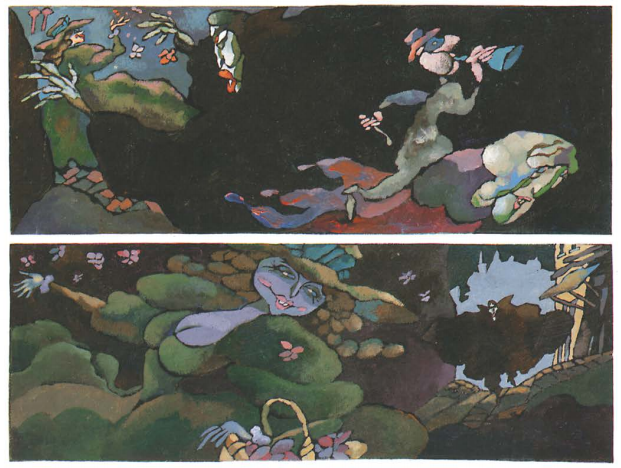
Let’s be honest, our boy Dracula has been utilized, and utilized to death in horror, to the point where it can almost feel comforting when he appears. The exhaustion of overuse gives a sense of familiarity that plays against the discomfort and terror such a figure should inspire. However, Alberto Breccia cleverly works this situation to his advantage by exploring a Dracula late in life, plagued by a changing world full of greater horrors and even a few dangers to his own well-being. The story crossed with his art manages to be trippy, amusing, and subtly disturbing.
Breccia’s expressionistic style borders on gonzo art, with moody shades oozing across the page, and feeling very much like a fever dream mashup of Terry Gilliam and Ralph Steadman. Each page is so packed with detail that this is a read you can return to again and again, always finding something new to admire. It jives with the short stories perfectly, managing to be both humorous and profoundly disturbing. The comic entitled I Was Legend has a particularly heavy gravity to it, depicting escalating layers of human violence, depravity, debauchery, and cruelty. This series was created during the last of a succession of Argentine military dictatorships (1982–1983), so it’s no surprise that such shocking material would be contained in Breccia’s art, as this is a period of profound human rights violations. Dracula wanders through this horrific and shifting landscape, and is seen fleeing to his home at the end.
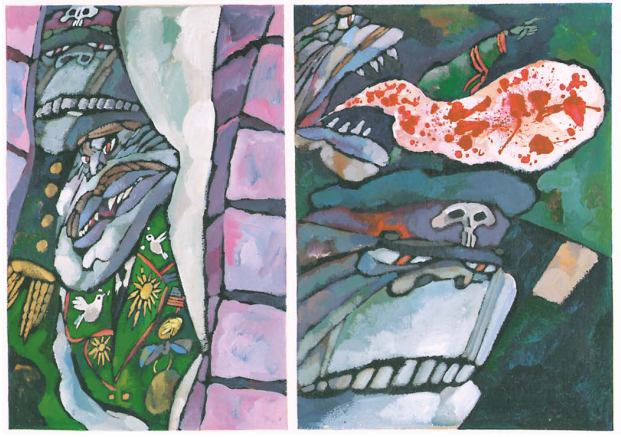
Though grotesque and often violent, the tone also evokes a certain nostalgia for Mad Magazine comics, with a cross of satire and slapstick comedy. It’s surprisingly funny while avoiding predictability. The whole notion of an outdated, ailing, and out of touch vampire is amusing, but it also hits home to very real fears of aging even non-immortal vampires experience. If Dracula, the Daddy Vampire himself, can experience such failings and frailty, then what does this say for the rest of us?
This collection also includes Breccia’s sketches, an afterword by Daniele Brolly, and even a biography of Alberto Breccia to give context to this unconventional comic. It’s a rare gem that deserves a home on the shelf of any comic appreciator or collector’s bookshelf.
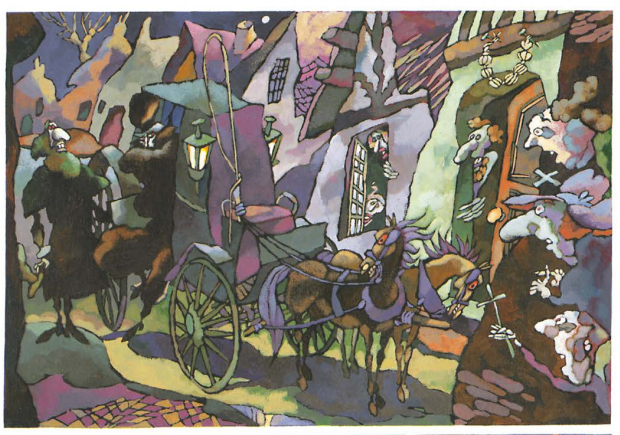
Alberto Breccia’s Dracula is part of The Alberto Breccia Library series and can be purchased by following the link to the Fantagraphics site.
More Comic Reviews
Lost Cos (2023) Film Review – Fantasy vs. Reality in Sequins and Glitter
Are You a Hero, Or a Villain? “Flesh, flash, and fantasy” are the themes of Broadway producer Robin de Levita’s directorial debut film, Lost Cos (2023). It follows the story…
Silent Hill: Dying Inside (2004) Comic Review
Silent Hill is certainly one of the most beloved survival horror series to come out of Japan, with dedicated fans from all over the world falling in love with its…
Vitiators (2022) Comic Review: One Hell of a Manga
Trigger warnings for virtually everything, from child ab*se to r*pe, torture, animal ab*se, mutilation, and repeated mentions of c*ck vore. Yes, c*ck vore. And probably whatever you’re thinking, that too….
Gideon Falls (Deluxe Edition) Book One Review – Murder In The Black Barn
Announced in 2017, Gideon Falls was billed as Jeff Lemire’s unique take on the horror genre, focused on exploring the idea of a source of evil versus relying on gore….
Gaia (2022) Manga Review – A Deviously Dark Debut Horror Manga
Gaia is a strikingly gorgeous and demented release from new mangaka Asagi Yaenaga, who is transitioning from their expressive and violent art pieces into the realm of narrative storytelling. The…
The Evil Dead Graphic Novel Review – Celebrating 40 Years of Horror
It is an odd realization that Evil Dead is looking at coming up on its 40th year anniversary, a film that, for many, catapulted their interest into horror cinema. In…

A study in contrasts, Aubry is a lover of knitting and rescuing strays, but also most likely the one cheering loudest during gory horror scenes.
Someday she’s going to get too excited and accidentally stab herself with a knitting needle.
